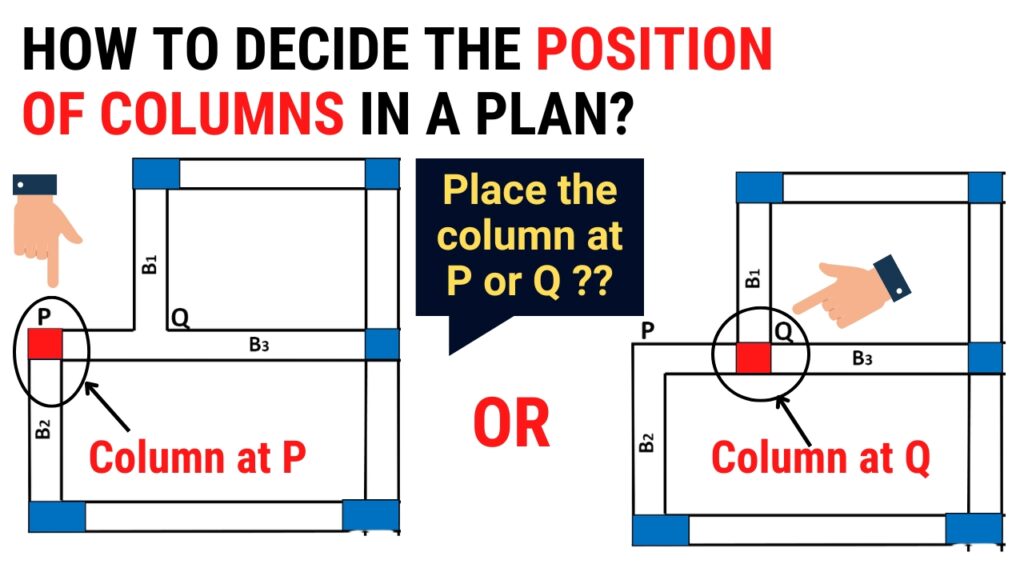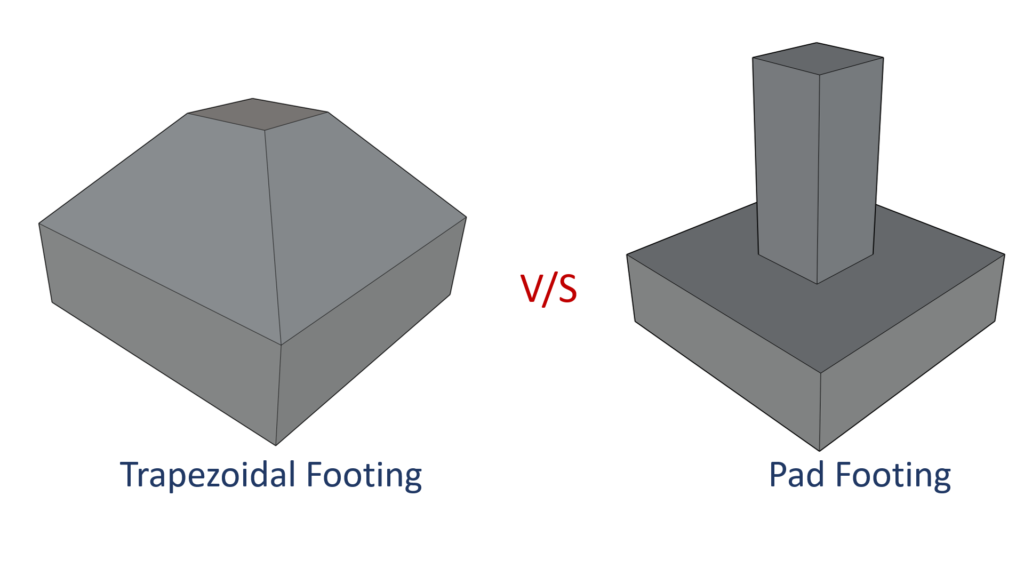The two most common structural systems used in building construction are load-bearing structures and framed structures. In load-bearing structures the walls are designed to carry the weight of the building, transferring it directly to the earth. In contrast, a framed structure is a type of building design where the load is carried by an external frame or skeleton. The external frame of a framed structure is made up of columns and beams that are connected together to form a grid-like structure. The walls of a framed structure are typically non-load bearing, while the load is distributed from the slab to the beams, then from the beams to the columns, and finally to the earth through the footings of the structure.
What is a Load-Bearing structure?

A load-bearing structure is a type of structure where the load of the building is carried by the walls themselves. In a load-bearing structure, the walls are typically made of masonry materials such as brick or stone, and they are designed to support the weight of the building. The floors and roof of a load-bearing structure are typically supported by the walls, rather than by an external frame.
One of the main advantages of a load-bearing structure is that it is relatively simple to design and construct. Because the load is carried directly by the walls, there is no need for an external frame or skeleton. This can make load-bearing structures more cost-effective to build, particularly in cases where the walls are constructed using locally available materials.
However, load-bearing structures are generally less flexible than framed structures, as the walls are integral to the stability of the building. It can be more difficult to add or remove walls or make changes to the layout of a load-bearing structure, as this can affect the overall stability of the building.
Load-bearing structures are commonly used in a variety of applications, including residential buildings, commercial buildings, and public buildings. They are particularly well-suited for smaller buildings or for buildings with simple layouts, as the load-carrying capacity of the walls can be easily calculated and designed for.
What is a Framed Structure?

A framed structure is a type of building design where the load of the building is carried by an external frame or skeleton. The external frame is made up of columns and beams, which are connected together to form a grid-like structure. The walls of a framed structure are typically non-load bearing, meaning they do not carry any of the weight of the building. Instead, they are used to enclose the space within the building and provide separation between different areas.
One of the main advantages of a framed structure is that it is more flexible and adaptable than a load-bearing structure. Because the load is carried by the external frame, the walls of a framed structure can be moved or modified without affecting the overall stability of the building. This makes it easier to add or remove walls, or to make changes to the layout of a building.
Framed structures are commonly used in a variety of applications, including residential buildings, commercial buildings, and public buildings. They are particularly well-suited for larger buildings or for buildings with more complex layouts, as the external frame allows for greater flexibility in the design and arrangement of the space.
Difference between Load-Bearing structure and Framed structure
Here are some key points which we have used to differenciate between Load-bearing structures and framed structures.
- Components
A key difference between a framed structure and a load-bearing structure is the way in which the structure is composed. A framed structure is made up of an external frame or skeleton, which is composed of columns and beams. The walls of a framed structure are typically non-load bearing and are used to enclose the space within the building.
In contrast, a load-bearing structure is made up of walls that are designed to carry the weight of the building. The walls of a load-bearing structure are typically made of masonry materials such as brick or stone, and they are thick and strong enough to support the weight of the building. The floors and roof of a load-bearing structure are typically supported by the walls, rather than by an external frame.
- Load Transfer
Another difference between a framed structure and a load-bearing structure is the way in which the load of the building is carried. In a framed structure, the load is carried by the external frame, which distributes the load from the slab to the beams, then from the beams to the columns, and finally to the earth through the footings of the structure.
In a load-bearing structure, the load is carried directly by the walls. The load is transferred from floors and roof to the walls of the building, and then from walls to the load bearing footing.
- Wall Thickness
The thickness of the walls is another key difference between a framed structure and a load-bearing structure. The walls of a load-bearing structure are typically thicker than the walls of a framed structure, as they are designed to carry the weight of the building. The walls of a framed structure, on the other hand, are typically thinner, as they do not need to carry the load of the building.
4. Earthquake Resistance
A framed structure is generally more resistant to earthquakes than a load-bearing structure, as the external frame is able to absorb and distribute the forces of an earthquake more effectively.
5. Floor Area
The floor area of a building can also be affected by the choice between a framed structure and a load-bearing structure. A framed structure is generally able to span longer distances than a load-bearing structure, which means that it can support a larger floor area. This can be an important consideration for buildings with large open spaces, such as warehouses or factories.
6. Soil Condition
The soil condition of the site can also influence the choice between a framed structure and a load-bearing structure. In general, a framed structure is more suitable for sites with poor soil conditions, as the external frame is able to distribute the load of the building more evenly
7. Excavation
The amount of excavation required for a building project can vary depending on the type of structure being used. In general, a framed structure will require less excavation than a load-bearing structuren of similar size, as the foundation for a framed structure is typically shallower.
8. Speed of Construction
The speed of construction is another factor that can vary between a framed structure and a load-bearing structure. In general, a framed structure can be constructed more quickly than a load-bearing structure.
In contrast, the construction of a load-bearing structure can be more time-consuming, as the walls of the structure have to be built on site using traditional techniques such as laying bricks or stacking stones.
9. Life Span of Structure
The life span of a structure is another important consideration in building construction. In general, a framed structure will have a longer life span than a load-bearing structure, as the external frame is typically made of durable materials such as steel or concrete, which are less prone to decay.
10. Labour Requirement
The labour requirements for a building project can vary depending on the type of structure being used. In general, a framed structure will require more labour than a load-bearing structure. A load-bearing structure, on the other hand, will typically require less labour, as the walls of the structure are typically built using traditional techniques such as laying bricks or stacking stones.
11. Flexibility of Planning and Design
A framed structure is typically more flexible and adaptable than a load-bearing structure, as the external frame allows for greater flexibility in the layout of the space. It is easier to add or remove walls, or to make changes to the layout of a framed structure, as the walls are non-load bearing and do not affect the overall stability of the building.
In contrast, a load-bearing structure is less flexible, as the walls are integral to the stability of the building. It is more difficult to add or remove walls or make changes to the layout of a load-bearing structure, as this can affect the overall stability of the building.
In conclusion, the choice between a framed structure and a load-bearing structure will depend on a variety of factors, including the size and height of the building, the materials being used, the local building codes and regulations, and the specific requirements of the project. Both types of structures have their own unique advantages and disadvantages, and the best choice will depend on the specific needs and requirements of the project.




